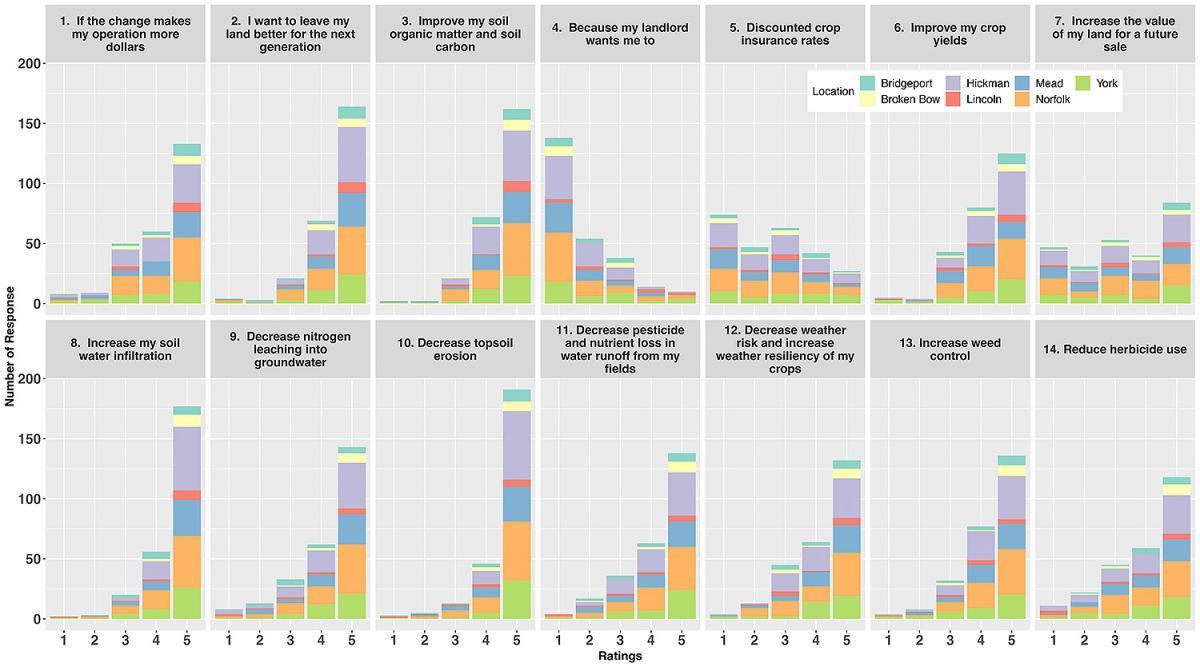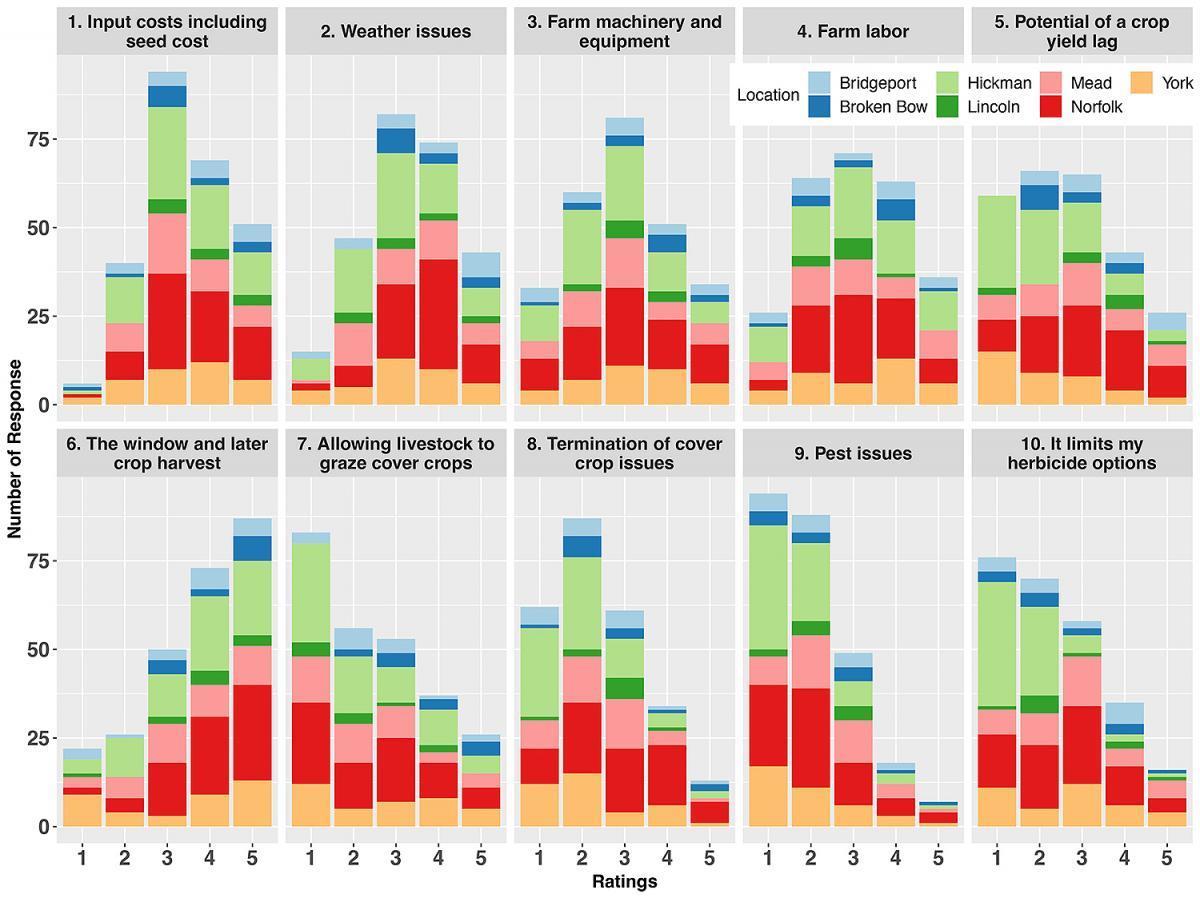By Saurav Das and Deepak Ghimire et.al
In 2019-20, Nebraska Healthy Soils Task Force (HSTF) conducted a survey to learn about producers' motivation and challenges in cover crop (CC), nutrient and other soil health management practices across the state. The survey was conducted in seven Nebraska locations — five eastern (Norfolk, York, Hickman, Mead and Lincoln), one central (Broken Bow) and one western city (Bridgeport). A total of 275 people participated in the survey of which 64.0% (n=176) were producers, 4.7% (n = 13) were landowners, 10.9% (n = 30) were crop consultants, 16.4% (n = 45) were from the university, USDA Natural Resources Conservation Service and state agencies, and other attendees were 4.0% (n = 11).
Dr. Bijesh Maharjan, Dr. Saurav Das and Deepak Ghimire from UNL collaborated with the HSTF in analyzing and reporting the survey data. The complete survey data was recently published and can be downloaded from the Journal of Soil and Water Conservation.
Motivation for Soil Health Practices
Reducing topsoil erosion was the most significant motivating factor in adopting soil health management practices. Increasing soil water infiltration, organic matter, soil C and the stewardship to sustain soil resources for future generations were other significant reasons for adopting different soil health management practices. Making a profit, reducing insurance rate or landowner decision were ranked as the least important in the adoption of soil health management practices.

Challenges in Cover Crop Adoption
The most significant challenge in adopting CC was a narrow window between the main crop harvest and CC planting. Cover crop planting and termination often coincide with a small management window that affects the field activities, such as harvesting and planting primary or cash crops. The average timing of corn and soybean harvest in Nebraska occurs from mid-October to early November.
Input costs, including seeding, weather issues and farm labor were ranked high among difficulties for adopting CC. Some producers stated that a cost-share covering planting and termination would help them adopt CC.
The survey results also showed some challenges and concern over yield drag. Factors such as CC termination, pest concerns and herbicide options were the least concerning challenges.

Fertility Management
Adding legumes (soybean, alfalfa) to the rotation and manure application were the most important factor in determining NPK rates. Most producers shared that they helped in reducing NPK application rates. Producers also conveyed they use soil test results to adjust their N rate.
The advice of an agronomist and the producer's experience were ranked as the third most important deciding factor for fertilizer N application. The fertilizer cost was ranked as the fourth most important deciding factor for NPK management.
In-season application based on climate models, government mandated input, and tissue test for side dressing were ranked as the least deciding factors for the NPK application.
Producers also shared their view that university educators could assist them in improving N management. They requested the development of imagery-based, in-season management compared to the plant tissue-based recommendation methods.

In summary, there is a wide gap between scientific understanding of soil health management and field-level adoption. The Nebraska HSTF survey demonstrated interests among Nebraska producers in CC, soil health and optimized fertilizer management. Simultaneously, the survey determined the producers' prime challenges, such as timing issues, weather concerns and others regarding adopting CC, soil health and fertilizer management practices.
Improved incentive programs that cost-share expenses can increase the adoption rate of soil health management practices. Ongoing and future work on precision nutrient management based on remote and proximal crop sensors can address producers' interest in pivoting away from tissue tests to available advanced technologies. Stewardship spirit among farmers to conserve soil resources and pass down a healthy ecosystem to future generations presents a bright hope for soil health management.
Source : unl.edu